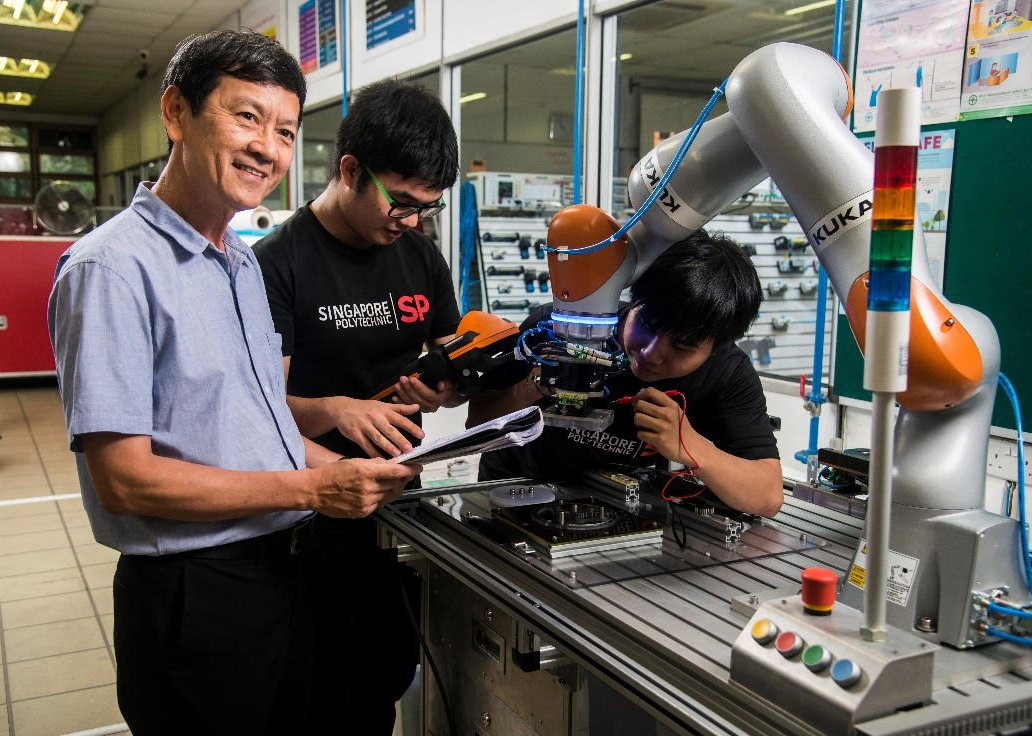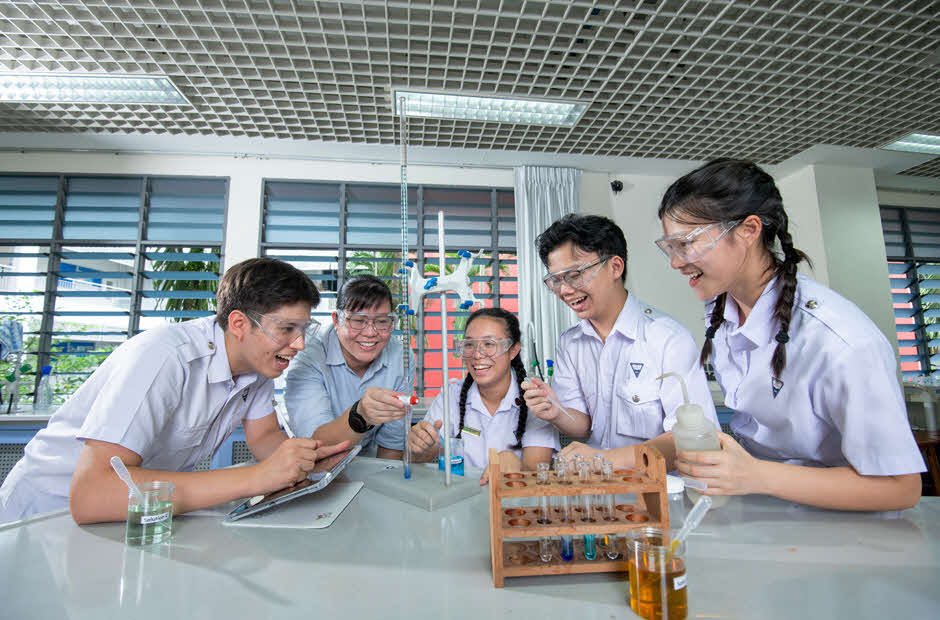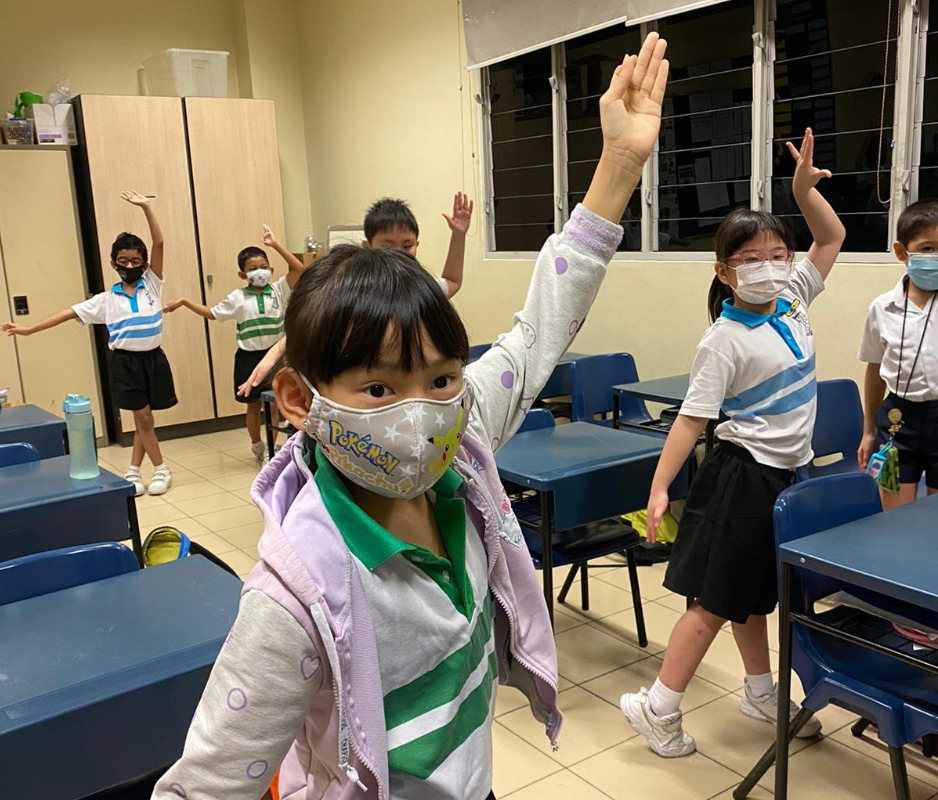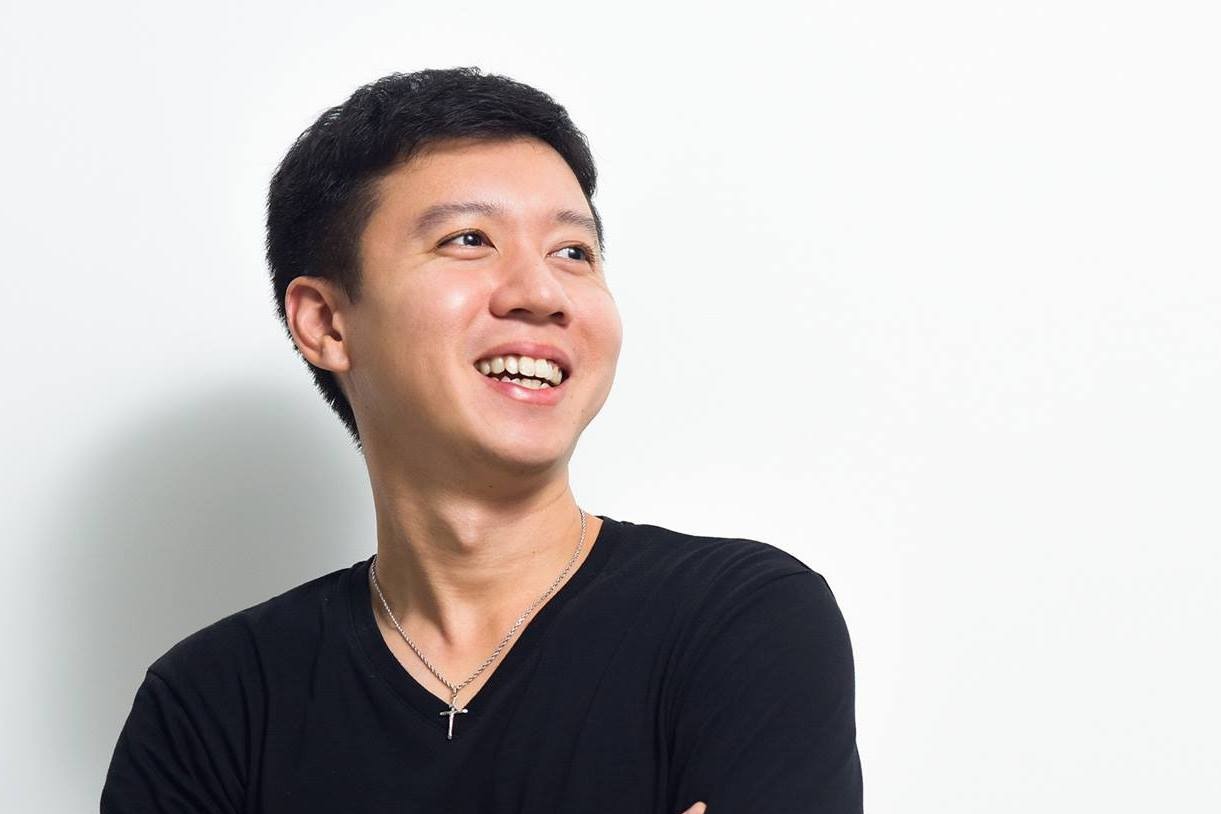Mr Ho Sum Lim, Singapore Polytechnic, President’s Award for Teachers 2019 Finalist
When Ho Sum Lim was appointed course chair of the Mechatronics and Robotics diploma, he knew he was in for a challenge. For many of the students, Mechatronics had not been their first choice. Some of them were also struggling with low self-esteem.
“The first thing I needed to fix was myself,” says Sum Lim. “I needed to do what it takes to believe in the course.”
Curriculum matters
He started out by speaking with stakeholders – graduates, the students, industry and the universities – and then modifying the curriculum to emphasise mechanical engineering and programming while dropping some electrical engineering modules.
These decisions proved to be right as the move towards smart machines gathered speed with Google acquiring companies that built robots in 2013 followed by Singapore’s Smart Nation drive. Being convinced of the relevance of the course helped Sum Lim convince his students too.
His next challenge was disengaged students. It’s not sustainable to keep pushing students, he says, so he had to figure out how to instil in his students intrinsic motivation. “If they are driven themselves, if they want to learn, then it’s auto pilot.”
Build and play
He started by asking to teach all the first-year students, so that he could get to know them better.
“I felt if I could connect with them as a friend, they would listen to me and that relationship would help me to influence them.”
He also added the element of play and competition into the course to spark interest. “I let the students play with what they built.”
In their first year, they had to build a simple robot that shoots out a ping-pong ball. Sum Lim decided to turn it into a competition.
At the end of the course, the robots from each class face each other on a table and shoot ping-pong balls to knock down toy soldiers. The winning class is the one that has knocked down the most number.
The results were immediate. “The enthusiasm shot up!”
He did the same thing for the second-year students. They had to build a robot with sensors that could detect and follow a reflective strip on a course. At the end of the project, the teams competed to see who could get around the course the fastest. The students were so enthused that after the first round, they asked to be able to tweak the programming or adjust the sensors on the spot so that they could beat their friends.
Apart from introducing play, Sum Lim also gave students a space they could ‘own’. A new deputy principal had joined the polytechnic, Hee Joh Liang, and he wanted to introduce the idea of learning spaces for students to learn together.
Sum Lim took him up on the idea and had the robotics lab reconfigured into that learning space. Each group of four or five third-year students would be given two tables in the space and they could ‘own’ that space for six months while they worked on their final year project.
“We let the students play and work there.” Sum Lim even donated one of his old guitars.
All the teams could see each other working. This provided some peer pressure.
The open nature of the space also allowed peer-to-peer help. “You would see students teaching other students.”
Building confidence
To further tap into students’ motivation, Sum Lim gave the final year students the autonomy to choose their own team, the project they wanted to work on, and allowed them to work on it at their preferred time. They could use whatever technique they liked. The only thing that mattered was the end product.
What also helped motivate students was that the course enabled them to build on their successes and give them confidence in their abilities. In the first year they started with simple projects that they could succeed at. The second year would build on that knowledge and have a project that was slightly more challenging. It was always a challenge to set “Goldilocks” tasks – “Not too difficult, not too easy”.
Sum Lim also used social media to help build up students’ confidence. He put up videos of the final year projects on the school’s website. He shared photos of projects and events on Facebook. When these posts got likes and encouraging messages, the students felt good about themselves.
Through all this, Sum Lim helped to develop intrinsic motivation among his students so that they would work hard.
He shared his message of autonomy and intrinsic motivation with colleagues as well, giving them the autonomy to choose projects that they wanted to work on for students in different years. His only message to the teachers: the students must enjoy the projects.
The real world
The third thrust of Sum Lim’s multi-pronged approach to overhauling the Mechatronics course was to build a relationship with the industry, so that his students would be able to get real world experience. This helped his students head out on internships with local and international companies, which were 22 weeks long. Some students went on to take on full-time jobs with companies they had interned at.
The Robotics and Mechatronics course is now a popular one. Overall results of the students have improved and even the academically weaker students are doing better.
The final year projects that they work on have also grown more complex – from simple hobbyist efforts like drones to a commercially useful automated storage and retrieval system. This system that the students built is now in use by a German company.
Sum Lim, who has since stepped down from the chair of the course, likes to say, “When students enjoy what they do, success is the only outcome.”






